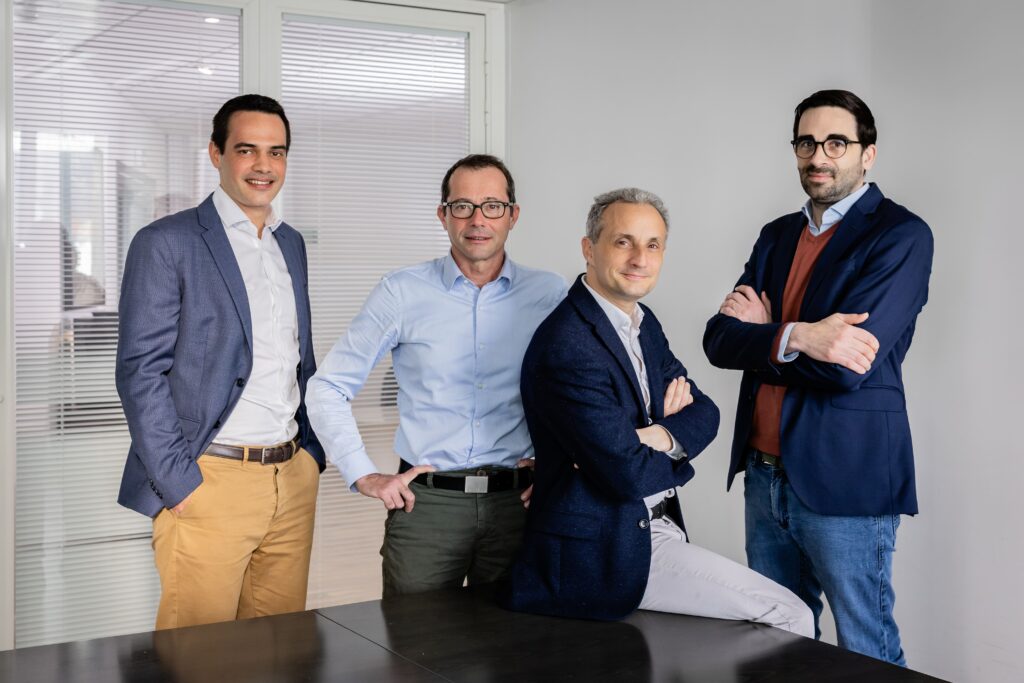Insider Brief
- To large fanfare, IBM introduced the IBM Condor, a 1,121 superconducting qubit quantum processor.
- IBM said Quantum Heron processor has 133 fixed-frequency qubits and tunable couplers, and offers a 3-5 times improvement in device performance over its predecessor.
- The company released these — and a long list of other — improvements at IBM Quantum Summit.
IBM announced a series of updates that mark a pivotal shift in the technology’s trajectory, adding that it brings quantum utility — the point when quantum can be used to handle practical computational challenges — closer.
The company unveiled two new quantum computers today at IBM Quantum Summit that promise to be the biggest and most efficient ever built. The first, called Condor, has well over 1,000 quantum bits, or qubits and the second, Heron is billed as one of IBM’s least error-prone devices.
In a blog post, IBM Quantum’s Jay Gambetta, IBM Fellow and vice president of IBM Quantum, wrote that these new quantum processors, as well as other advanced software tools unveiled today, signify a transition from foundational research to practical application in quantum computing.

A few key insights from the summit:
IBM’s Quantum Computing Advancements
IBM Condor Processor: IBM introduced the IBM Condor, a 1,121 superconducting qubit quantum processor. This processor represents a leap in chip design, featuring a 50% increase in qubit density and over a mile of high-density cryogenic flex IO wiring within a single dilution refrigerator. The Condor serves as a milestone in solving scale and informing future hardware design.
IBM Quantum Heron Processor: The introduction of the IBM Quantum Heron processor marks another advancement. With 133 fixed-frequency qubits and tunable couplers, the Heron offers a 3-5 times improvement in device performance over its predecessor, the 127-qubit Eagle processor. This development is a stride towards eliminating cross-talk and setting a foundation for future hardware.
“With Heron, we have developed a qubit and the gate technology that we’re confident will form the foundation of our hardware roadmap going forward,” Gambetta writes.
IBM Quantum System Two: This system, operational at IBM’s lab in Yorktown Heights, NY, is designed as the bedrock for scalable quantum computation. It combines cryogenic infrastructure with advanced control electronics and is currently equipped with three IBM Quantum Heron processors.
Gambetta writes: “IBM Quantum System Two is the modular-architecture quantum computing platform that we will use to realize parallel circuit executions for quantum-centric supercomputing.”
Software and Middleware Developments
Qiskit 1.0: Scheduled for release in February 2024, Qiskit 1.0 represents the first stable version of the popular quantum computing software development kit (SDK). It brings significant improvements in circuit construction, compilation times, and memory consumption.
“Quantum-centric supercomputing is not achieved by hardware alone. It requires performant software for generating and manipulating quantum circuits and middleware for executing hybrid quantum-classical workflows in a heterogeneous computing environment,” he writes.
AI Transpilation for Premium Users: IBM is integrating AI into quantum computing with a circuit compilation service using reinforcement learning. This service demonstrates a reduction in two-qubit gate count by 20-50% compared to standard methods.
Execution Modes: IBM introduced new execution modes, including batch mode and extended Sessions, aimed at optimizing throughput and enabling advanced quantum-classical workloads.
Quantum Computing’s Expanding Reach
Partnership with UC Berkeley: A collaborative paper with UC Berkeley outlines the path toward useful quantum computing. This collaboration underscores the expanding scope of quantum computing applications.
Quantum Computational Scientists: IBM emphasizes the growing community of quantum computational scientists. This group, extending beyond traditional quantum computing users, is set to benefit from the expanded capabilities of IBM’s quantum technology.
Architectural Innovations in Quantum Computing
The need for a shift beyond the traditional circuit model is evident. IBM is focusing on incorporating parallelism, concurrent classical computing, and dynamic circuits to enhance computation.
Circuit Knitting: A tool such as circuit knitting is highlighted as a means to expand the reach of quantum computation.
Heterogeneous Computing Architecture: A combination of scalable and parallel circuit execution with advanced classical computation is recognized as a requisite for future developments.
Vision for Quantum-Centric Supercomputing
IBM’s vision encompasses quantum-centric supercomputing, a high-performance system integrating both quantum and classical computational elements.
Extended Roadmap
At the IBM Quantum Summit, an extended roadmap was unveiled, charting the journey towards quantum-centric supercomputing over the next decade. This roadmap is designed to facilitate more advanced, utility-scale work and a more seamless development environment for users.
Gambetta writes: “In order to guide our mission to realize quantum-centric supercomputing, we are expanding our industry-defining roadmap out to 2033 for a decade worth of quantum innovation. The roadmap highlights improvements in the number of gates that our processors and systems will be able to execute. Starting with a target of Heron reaching 5,000 gates in 2024, the roadmap lays out multiple generations of processors, each leveraging improvements in quality to achieve ever-larger gate counts. Then, in 2029, we hit an inflection point: executing 100 million gates over 200 qubits with our Starling processor employing error correction based on the novel Gross code. This is followed by Blue Jay, a system capable of executing 1 billion gates across 2,000 qubits by 2033. This represents a nine order-of-magnitude increase in performed gates since we put our first device on the cloud in 2016. Our new innovation roadmap will demonstrates the technology needed to realize the Gross code through l-, m-, and c-couplers to be demonstrated by Flamingo, Crossbill, and Kookaburra, respectively.”
You can view the extended IBM Quantum Development Roadmap through 2033, and the IBM Quantum Innovation Roadmap through 2029.
If you found this article to be informative, you can explore more current quantum news here, exclusives, interviews, and podcasts.

















